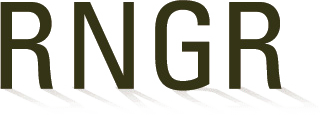
Agoseris (aurantiaca)
|
Scott Jensen Botanist USDA FS - Rocky Mountain Research Station, Shrub Sciences Laboratory 735 N 500 E Provo, Utah 84606 801-356-5128 801-375-6968 (fax) sljensen@fs.fed.us www.fs.fed.us/rm/boise |
|
| Family Scientific Name: | Asteraceae | ||
|---|---|---|---|
| Family Common Name: | Aster Family | ||
| Scientific Name: | Agoseris aurantiaca (Hook.) Greene. | ||
| Common Name: | orange agoseris | ||
| Species Code: | AGAU2 | ||
| Ecotype: | Wyoming Big Sagebrush, Rabbitbrush, perennial grass communities, Tintic Valley, Juab Co, Utah, 5950 ft. | ||
| General Distribution: | Widespread throughout the Intermountain and Rocky mountain regions from Washington to Montana and south to Arizona. Mostly in well drained soil, often with sagebrush or pinyon-juniper, from the valleys and lowlands to as high as 10,800 ft. in the mountains. | ||
| Propagation Goal: | plants | ||
| Propagation Method: | seed | ||
| ProductType: | Container (plug) | ||
| Stock Type: | 5.5 cu. in. root trainers. | ||
| Time To Grow: | 12 Weeks | ||
| Target Specifications: | A plug with abundant root mass able to hold together potting media during transplanting. | ||
| Propagule Collection: |
Seed (an achene) ripens May to June at elevations between 5,200 and 6100 ft in the Great Basin. Plants typically produce 1-3 seedheads annually, but may continue to bolt scapes as long as soil moisture is adequate. Ripening is indeterminate on an individual plant but largely synchronized across a population as the first heads ripen as a group followed subsequent ripening as moisture permits. Seed is naturally wind dispersed, so timing collections is critical. Fruits are mature when the spreading action of the drying pappus opens the head. Plants typically occur at low densities requiring hand collection. Stripping the seed, by placing the base of the head between fingers and closing the hand while pulling, reduces loss. Minimizing the amount of inert material included in the collection eases cleaning. Collected material is stored in breathable bags under cool dry conditions. |
||
| Propagule Processing: | Collections are typically small, allowing removal of much of the larger chaff by hand or screening. Remaining materials are lightly rolled between two boards covered with soft leather. Continue this until the pappus break free of the seed. Final cleaning can be done with a variety of air column or air screen type machines. | ||
| Pre-Planting Treatments: | Trays were planted, moistened, wrapped in plastic bags and placed in a cold room to stratify for 3 weeks. Other sources may require more or less stratification. | ||
| Growing Area Preparation/ Annual Practices for Perennial Crops: |
Seed is planted vertically to the depth of the achene body in 5.5 in3 root trainers. Root trainers are filled with 2 parts sieved peat: 2 parts Vermiculite: 1 part Turfacer (montmorillonite clay): 1 part #20 quartz silica sand, 1 part native soil plus fertilizer and micronutrients then steam aerated at 140ø F for 30 minutes. | ||
| Establishment Phase: | Trays are moved to a greenhouse in December and watered as needed through establishment. Greenhouse temperatures were 55ø F night, 70ø F day. | ||
| Length of Establishment Phase: | 4-5 weeks, with most germination occurring during the 2nd week. | ||
| Active Growth Phase: | Plants are watered every 2 to 3 days. Greenhouse temperatures are maintained at 55ø F night, 70ø F day. In a previous planting when nighttime temperatures were increased from 50ø F to 65ø F, 2 month old plants of the closely related Agoseris glauca went dormant within 1 week. | ||
| Length of Active Growth Phase: | 8+ weeks | ||
| References: |
Welsh, S. L., Atwood, N. D., S. Goodrich and Higgins, L. C. 2003. A Utah Flora. Third Edition, revised. Brigham Young University, Provo. Cronquist, A., Holmgren, A. H., Holmgren, N. H., Reveal, J.L. and Holmgren, P. K. 1994. Intermountain Flora; Vascular Plants of the Intermountain West, U.S.A. Vol. 5, Asterales. New York Botanical Garden, Bronx, New York. USDA, NRCS. 2006. The PLANTS Database (http://plants.usda.gov, 5 December 2006). National Plant Data Center, Baton Rouge, LA 70874-4490 USA. Retrieved 5 December 2006, from the Integrated Taxonomic Information System on-line database, http://www.itis.gov. |
||
Citation:
Jensen, Scott L. 2007. Propagation protocol for production of Container (plug) Agoseris aurantiaca (Hook.) Greene. plants 5.5 cu. in. root trainers.; USDA FS - Rocky Mountain Research Station, Shrub Sciences Laboratory Provo, Utah. In: Native Plant Network. URL: https://NativePlantNetwork.org (accessed 2025/11/02). US Department of Agriculture, Forest Service, National Center for Reforestation, Nurseries, and Genetic Resources.



